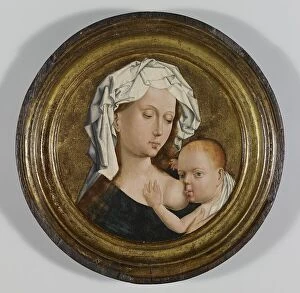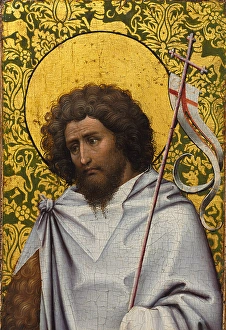Robert Campin Collection
Robert Campin, also known as the Master of Flemalle, was a renowned Netherlandish painter during the 15th century
All Professionally Made to Order for Quick Shipping
Robert Campin, also known as the Master of Flemalle, was a renowned Netherlandish painter during the 15th century. His works showcased his exceptional talent and mastery in capturing religious subjects with great attention to detail. One of his notable creations is the "Madonna and Child with Saints in the Enclosed Garden, " which was painted between 1440 and 1460 by an anonymous artist influenced by Campin's style. This captivating piece portrays the Virgin Mary holding baby Jesus surrounded by saints within a serene garden setting. Another remarkable artwork attributed to Campin is the "Man in Prayer, " created around 1430-35 by his workshop. This painting depicts a devout man deep in prayer, showcasing Campin's ability to capture human emotion and spirituality. Campin's own hand can be seen in "John the Baptist, " painted circa 1410. In this work, he skillfully renders John as a young man wearing animal skins while holding a staff, emphasizing his role as a prophet. In addition to religious themes, Campin also ventured into other subjects like portraits. One such example is "Ala De Retablo (Santa Barbara), " completed in 1438 but reproduced later in c1934. This exquisite piece showcases Santa Barbara standing gracefully amidst intricate details that reflect Campin's meticulous craftsmanship. Another portrait attributed to him is "St. John the Baptist and the Franciscan master Henry of Werl. " Painted around 1438 but reproduced later on, it captures St. John alongside Henry of Werl dressed in their respective traditional attire. Campin's influence extended beyond his lifetime; even modern artists recognized his genius through works like "An Altar-Piece" from The Maitre de Flemalle series created in 1907 or mid-15th-century-inspired pieces such as "St Veronica" from 1958 and "Pieta" from 1927.
















